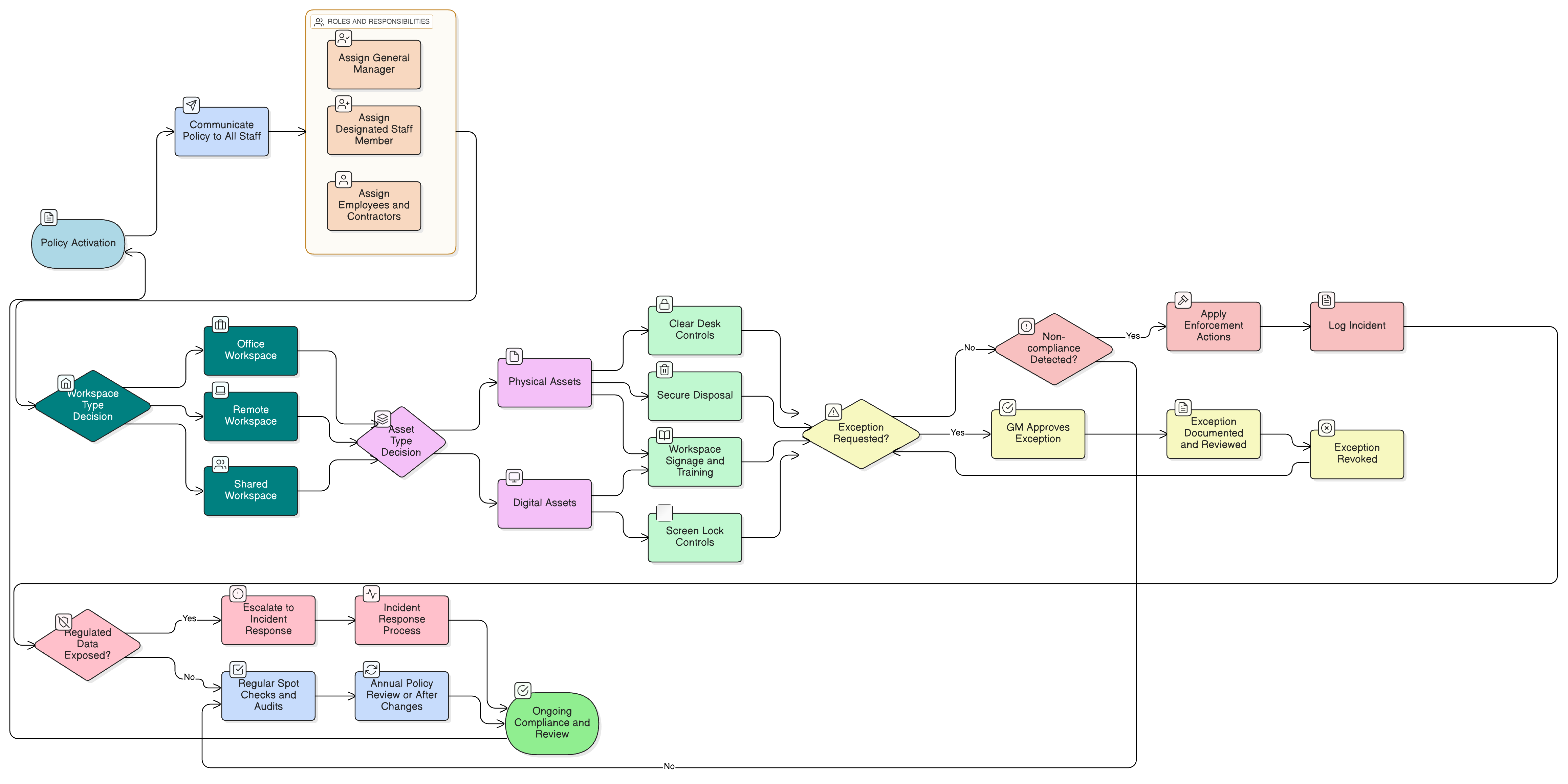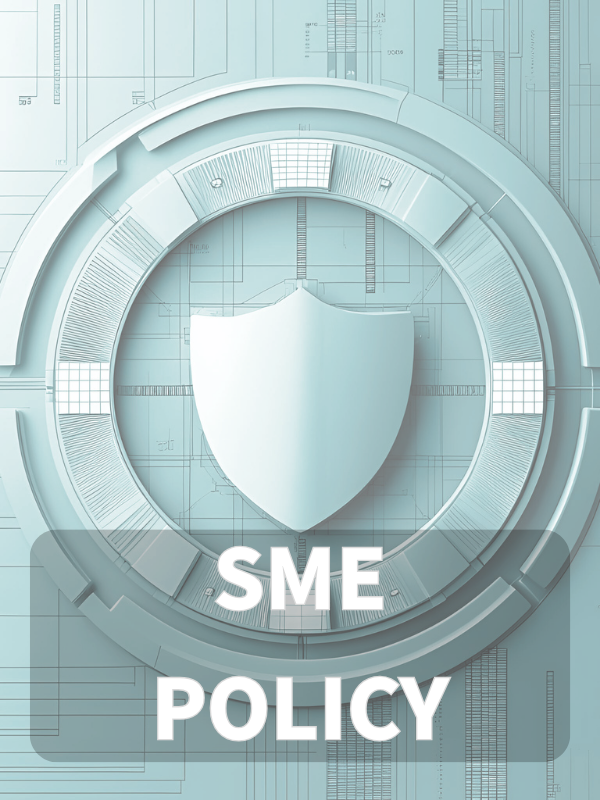Overview
This Clear Desk and Screen Policy establishes practical, enforceable guidelines for SMEs to protect sensitive information in all workspaces and digital environments, aligning with ISO/IEC 27001 and GDPR requirements. It details responsibilities, physical and technical control rules, compliance checks, and incident procedures, all tailored for organizations without formal IT departments.
Protect Sensitive Data Anywhere
Enforce screen locking and secure workspace practices for both physical offices and remote work.
Easy SME Implementation
Designed for organizations without dedicated IT teams, overseen by a General Manager.
Meet Audit & Certification Needs
Helps satisfy ISO/IEC 27001:2022 and GDPR requirements through clear procedures.
Read Full Overview
Policy Diagram

Click diagram to view full size
What's Inside
Scope and Rules of Engagement
Roles and Responsibilities for SME
Clear Desk and Screen Enforcement
Technical and Physical Control Requirements
Compliance and Incident Response
Audit and Monitoring Processes
Framework Compliance
🛡️ Supported Standards & Frameworks
This product is aligned with the following compliance frameworks, with detailed clause and control mappings.
| Framework | Covered Clauses / Controls |
|---|---|
| ISO/IEC 27001:2022 | |
| ISO/IEC 27002:2022 | |
| NIST SP 800-53 Rev.5 | |
| EU NIS2 | |
| EU DORA | |
| COBIT 2019 | |
| EU GDPR |
Article 32
|
Related Policies
Governance Roles And Responsibilities Policy-SME
Clarifies the GM’s authority to enforce and audit physical and digital workspace behavior.
Access Control Policy-SME
Supports technical implementation of screen lock and secure workstation login practices.
Information Security Awareness And Training Policy-SME
Reinforces the behavioral training needed for policy compliance.
Data Protection And Privacy Policy-SME
Defines obligations for handling and safeguarding personal and sensitive data in compliance with GDPR.
Incident Response Policy-SME
Provides the escalation and response framework if a violation results in data exposure or breach.
About Clarysec Policies - Clear Desk and Clear Screen Policy - SME
Generic security policies are often built for large corporations, leaving small businesses struggling to apply complex rules and undefined roles. This policy is different. Our SME policies are designed from the ground up for practical implementation in organizations without dedicated security teams. We assign responsibilities to the roles you actually have, like the General Manager and your IT Provider, not an army of specialists you don't. Every requirement is broken down into a uniquely numbered clause (e.g., 5.2.1, 5.2.2). This turns the policy into a clear, step-by-step checklist, making it easy to implement, audit, and customize without rewriting entire sections.
Plain-Language Staff Rules
All personnel, regardless of technical skill, get simple, actionable instructions for secure workspace habits.
Quarterly Compliance Checks
Policy requires practical spot-checks and record keeping, supporting continuous SME-level assurance.
Frequently Asked Questions
Built for Leaders, By Leaders
This policy was authored by a security leader with 25+ years of experience deploying and auditing ISMS frameworks for global enterprises. It's designed not just to be a document, but a defensible framework that stands up to auditor scrutiny.
